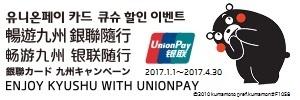ARTICLE
Beppu; When Going into Hell is a Pleasure.
24/12/2015
- Author : APras
- Country of Origin : South Korea
- Age : 30's
- Gender :male
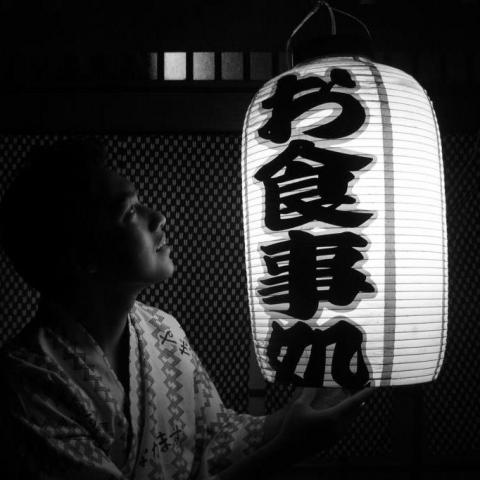
Hell, a place that no one wants to go, or even to talk about. But, if there is a harmless hell, in fact it can bring so much joy; do you still want to be there? If yes, definitely the only fun hell is Beppu, a middle size city located at the north eastern coast of Kyushu Island. As a coastal city, Beppu has so many things to offer. Its unique beaches would indulge you through the sensation of being buried with tons of black volcanic sands lying on its coastline. If you are seafood addict, Beppu is the right place to enjoy it. Fugu, the blowfish, that is regarded as poisonous fish becomes a worth-trying seafood there. Its abundant produces of fresh seafood ensure your big appetite fulfilled. But, among the good things about Beppu, Onsen, hot spring stands out to be the top attraction of this city. Hundred thousands of people constantly flock here annually for this reason.
In Beppu, onsen brings blessing to many populations. Onsen pools at different size and style could be found easily in local houses, restaurants, and hotels. According to the information released by Beppu City Administration, the number of onsen pools there reaches 2.909. They are steadily supplied by 13.000 tons of hot water, springing up from the deep of earth every day. So, there is no wonder that smokes from the onsen filling the air of Beppu. The city seems to being boiled in very high temperature.
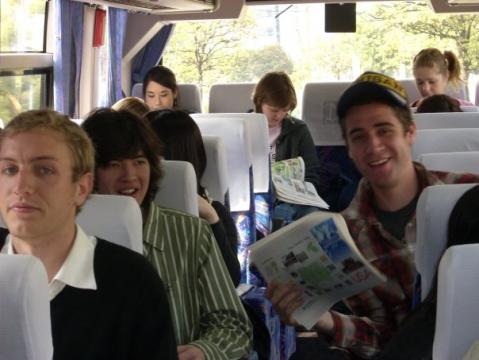
My deep connection to Beppu goes back to 2008. In this year, together with dozens of my classmates in Kyushu University took a trip there. Besides Japanese language class and homestay with a Japanese family, Beppu trip was a part of immersion programme that we had. At 8 am on a clear Sunday, our bus left for Beppu from ryugakusei kaikan (international students’ dormitory) located at Kashiihama Ward. All of us got into enthusiastic for having this tour as we would spend a night in a ryokan (Japanese traditional inn). Another reason was Jigoku Meguri or hell tour held by the trip committee igniting our curiosity.
Our bus was speeding up on Fukuoka-Oita highway. The view of big buildings standing at every inch of Fukuoka’s land, a city where we stayed at, gradually disappeared. Narrow paddy fields were evidently attached on the shoulders of mountains. Among the yellow paddy fields, stood firmly local houses, confirming the resilience of anti-earthquake architecture that was scientifically developed by Japanese engineers. At their backdrop, a range of green mountains was covered by thick mist. We got in and out of tunnels, and then followed the long and winding highway that was supported by many giant concrete pillars built upon the hills. We passed through Yaba Hita Hikosan, a long mountain lies among Fukoka Prefecture in the west, Kumamoto Prefecture in the middle, and Oita Prefecture in the east.
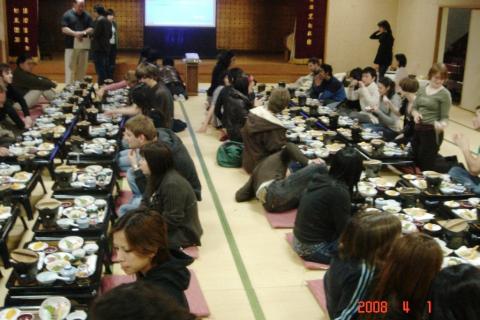
Entering the outskirts of Beppu city, the view outside of my window frame was dominated by arid land. Giant rocks were scattered everywhere as the result of volcanic activities occurred in the past of thousand years. Palm trees seemed to struggle growing on a wide savanna. On the other hand, the tares could survive even on the driest land. Contrary to the condition, blue sea was peeping out from behind of the hills, giving me a fresher look. On top of a hill, the buildings of Ritsumeikan Asia Pacific University (APU) stood firmly. I heard that many Indonesian students pursuing their dreams in various academic fields here.
Irashaimase, a sincere greeting by an old woman welcomed us. Dressing in a beautiful kimono, she was the owner of the ryokan. In Japan, the owners of ryokan are accustomed to welcome their guests personally as a symbol of their genuine hospitality. Further, they also ensure their guest could stay comfortably and all their needs fulfilled. From the business point of view, this personal touch could be regarded as an effort to keep the customers coming back again in next trips. But to foreigner like me, this interested me a lot as I could deeply learn the Japanese culture in hospitality industry while enjoying the true service of Japanese traditional inns. What a great experience, right?
The trip committee took us to the ryokan’s dining room. Yuhuuu! It was just the right time because we were all already hungry after a-three hour bus ride. I noticed that every detail of our dish got paid attention from the ryokan’s chefs. Small tables were set in a line at the center of the room. Just behind the tables, lied cushions in rectangle shape, places where we sat on. In front of us, one set of Japanese set menu or Washoku has been gracefully presented. It comprised a bowl of rice, shrimp and pumpkin tenpura, shrimp and tuna sashimi, beef cutlets, Sobha noodle, bamboo shoots and pickles, Shoyu or a Japanese soy sauce and a slice of orange. The use of bamboo shoots marked the season of spring that we just entered. Being constantly heated above a flame, Sukiyaki that contained mushrooms and vegetables was served hot.
When looking at the dish, I got instantly stunned by the harmony of its colors; red, yellow, green, brown, and pink set in balance. Each part of the dish played its role to entice the eater’s eyes, but collectively appeared into a delightful combination. So wonderful! My appetite was skyrocketing. “Itadakimasu”. I said to start my lunch. For the opening, refreshing Sobha noodle I chose. Then, I had rice with crispy tempura and the crunchy pickles and bamboo shoots. Separately, I ate the beef cutlets and shrimp and tuna sashimi. The texture of this food was tender, lingering in my mouth. I was also taken by Sukiyaki to another adventure of Japanese mouth watering food. Being served hot, this food gave me a sense of warm in my throat. It was simple, yet delicious. Oishiii!
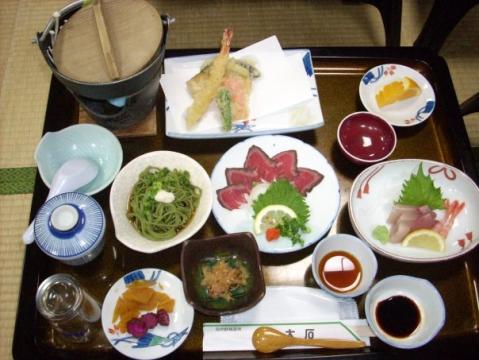
Before entering our rooms, we were told by Imai Sensei about our roommates. One room could be occupied by up to five persons. I was so happy to find out that Marc, my closest friend to be with me along with Niclas from Sweden, Xiao from China and Andy from the US. We got a room on second floor of the ryokan. To reach there, we should take steep stairs. But this effort was paid off as we saw our room. We liked our room very much. The Japanese ambience was strongly highlighted inside. Our room’s floor was covered with tatami, Japanese-style mat made of woven rice straws. As stepping on it, I could feel its sleek texture. At one wall of the room, a Japanese calligraphy scroll was hanging sophisticatedly. Since it was written in complicated Kanji, I could not figure out what the meaning was. Simply, I only could enjoy the beauty of its writing style. Under the scroll, a Japanese-style vase of flower was being placed, amplifying the accent of Japanese culture that was intentionally presented in the room. From our room’s balcony, the scenery was just perfect; green hilly landscape of Beppu city met with the blue Beppu Sea. And for the bonus, we could feel the breeze of the ocean wind.

Other characteristic of ryokan’s room was that being spacious at the center. Attached to the wall, there were oshires, Japanese style cupboard. The use of the cupboard was to store futon, a flat mattress stuffed with cotton or other material that makes up a-Japanese style bed. We only needed to roll it out. For a tropical creature like me, sleeping on a futon was evidently saving me from spring’s cold temperature of Beppu. So warm and cozy! Each guest of the ryokan was also provided with Yukata, a casual summer kimono. I was not an exception. Literally, Yukata means bathing clothes, yet their use is not limited to after-bath wear. Even for us, Yukata was very comfortable to wear during our night sightseeing in Beppu. We stopped by at many places preserving Japanese traditional architecture to take pictures with cool poses. We felt great being taken into photos with our beautiful yukata.
In the following day, we joined Jigoku meguri or hell tour. There were two hells we visited. Since not far from our ryokan, we went there on foot. By walking, we could closely enjoy the typical atmosphere of Beppu. Big and long pipes that became the tails of many buildings along the way, were sputtering, while emitting steam and smoke from the onsen. Beppu was just like a giant factory with thousands of chimneys. This city’s landscape is hilly, bringing a challenge to us. So we needed extra power to climb up and down the streets. Due to this, I should also cheer up Kristina, a Filipino fellow who was overwhelmed with the ups and downs. But finally, we could make it together. Yaay!
Some of the Beppu’s renowned hells are located in Kanawa District. They were not terrifying as we thought beforehand. In fact, the hell’s area was green and lush. It was a scenic park with colorful blossoming flowers. As we came there in spring, Sakura also perfectly showed its beauty. With solid pink and white topped the trees’ trunks, Sakura appeared to be like giant umbrellas. Everybody was captivated by the charm of the blooming Sakura. Because of this, the natural attraction was picked by most of the visitors as their photo backgrounds.
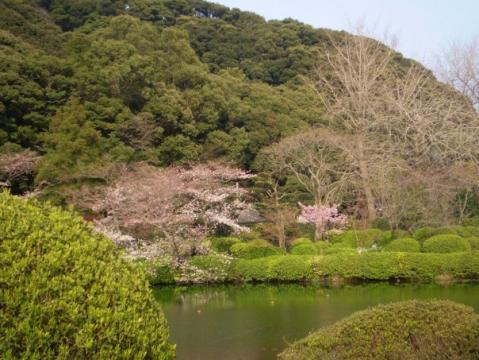
Umi Jigoku or sea hell was formed 1300 years ago. With 200 meters in depth and at 98 C, this hot boiling pond is characterized by its blue cobalt colored water filling it. Umi Jigoku is popular for its onsen eggs made. Ehmm…how the taste looked like? I got an offer by Shinyoung, my Korean fellow, to taste the egg. She divided the egg into two pieces. One for her. And the rest one for me. The colour was just beautiful with solid white and blushing yellow. When it came to the taste, the egg was more savory than the ordinary ones.
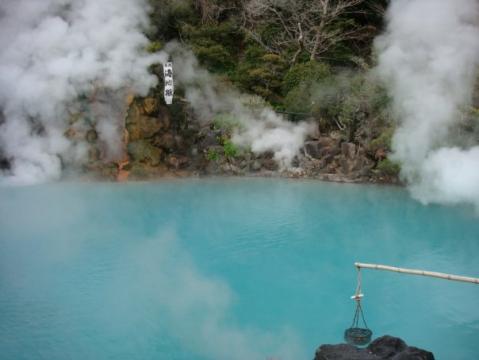
About 100 meters away, a blod pond could be found. In term of the appearance, it was more frightening than others. Its color of red was resulted from the high concentration of suphur on the surface of it. For safety, this hell was fenced with rocks to prevent the visitors to stay too close from it. But the biggest challenge for staying close to the blood hell is its suphurous smell. So, we did not make many photoghraps there. The only picture we took was that one with theme of ’smelly’, describing the pungent of the blood hell was. I did know how many hours we spent in the hell’s area until we realized we just got tired for wandering around. Due to our painful muscle as the result of a long walk, I, Marc, and Hide, our Japanese tutor decided to soak our feet in an ashiyu (footh bath) for a couple of minutes. Kimochi ne!.

We were exhausted after walking around Beppu in one day. As the panacea, we agreed to indulge our body in onsen at night. There was a sento, a public bath house close to our ryokan. Pollack sensei, our lecture on Japanese culture recommended it to us. He said the sento was one of the best in Beppu. No need to ask further about it, we just entered the sento. I was shocked by the rule; the visitors should put off their clothes. Nudity, especially in front of other people, was something unfamiliar to me. Despite being in the same gender, I was still really shy to do that. This was another momment of culture shock happened to me during my stay in Japan. But my mind kept telling me, ’onsen is one of the finest Japanese culture, so you should try it out one in a lifetime’. To folllow my mind, finally I decided to fly out from my comfort zone.
After storing my cloth in a locker, I still stepped into onsen area awkardly. I only got a hand towel to cover my ’vital part’..he..he. But, after knowing other visitors did the same way and did not care what I looked like, I felt relieved and tried to behave naturally. Beyond this ’strange tradition’ for foreigner with different cultural background like me, actually taking onsen is a part of Japanese culture that symbolizes equality. In being naked, humans are just the same without any social status atribut that to be usually proud of. To businesmen, taking onsen together with their business partners is one of many ways to keep their business advancing. A business negotiation could be hold while taking the relaxing onsen. To mark a business deal, they usually drink sake in onsen too.
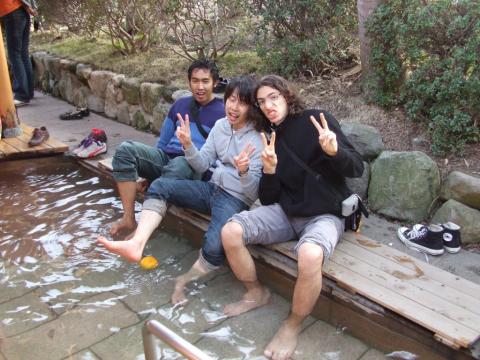
The visitors of a sento should follow certain rules. I also did so. At first, I was urged to wash whole parts of my body to cleanse the dirts with lots of soap. Soaps were provided by the sento operator, so I did not need to pay extra money. I sit on a wooden stool available there while washing and rubbing my body with the hand towel. To ensure the cleanness of my body from the soap’s bubbles, I conserved water in a bucket and it woud be splashed to my whole body. This is highly recommended for all onsen visitors. I did not soak my body directly in a hot onsen pond, but I chose a warm pond instead. This was my way to adapt into hot temperature.
At first, my body was shocked by the high temperature of the onsen. I felt like being fully electrified. Hot temperature suddenly stung my skin as the momment I got my body into the water step by step. It gave me a sensation of massage on my body. So I could feel so much relax. The rejuvenating process was on the way. I put my hand towel on my head while in the water as other visitors did. This was another instruction that we should follow for being in the onsen pond. Besides its healing qualities, the onsen structure was beautifully built. I liked the stones that were being set artistically on the tip of the onsen pond. It deeply provoked the sense of traditional Japan.
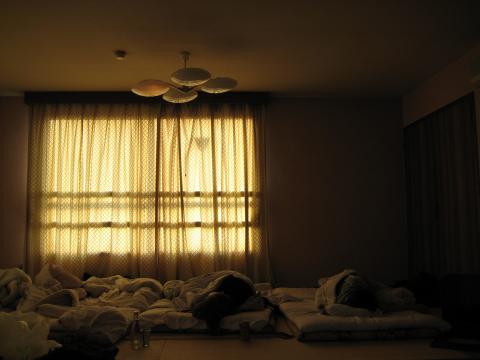
To conclude my onsen adventure at the night, I got my body splashed beneath the onsen fountain. There were 7 fountains that were built away from the onsen pools. The water stream of the fountains was so strong, making the sensation of being splashed more enjoyable. I spent a bit longer there to get my head, back, and legs water-massaged by one of the fountains. Like a child in the rain, I did enjoy being drenched. It was so much fun. As our whole body got fully relaxed, we had a good sleep that night until the next morning.
My trip to Beppu taught me how nature has shaped a magnificent culture. Onsen, a Japanese bath that has its sources from the hot springs is creatively utilized by the Japanese populations for a healing purpose. Beyond that tradition, there is a universal lesson embedded in it; values of equality that are symbolized with an obligation of nudity for those who would like to take onsen. It sounds strange, but this is the uniqueness of a distinctive culture.





![Kyushu Tourism Information [ Japan ]](/blogcontest/img/common/bnr_onsen_island.png)

